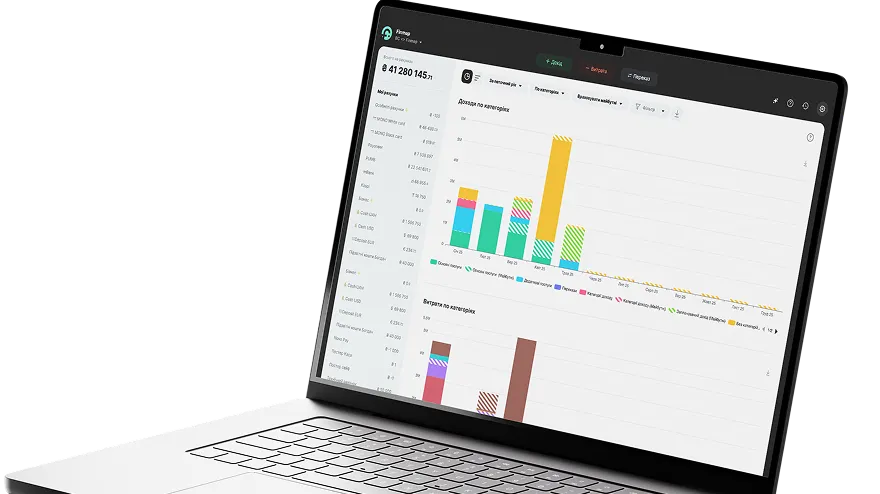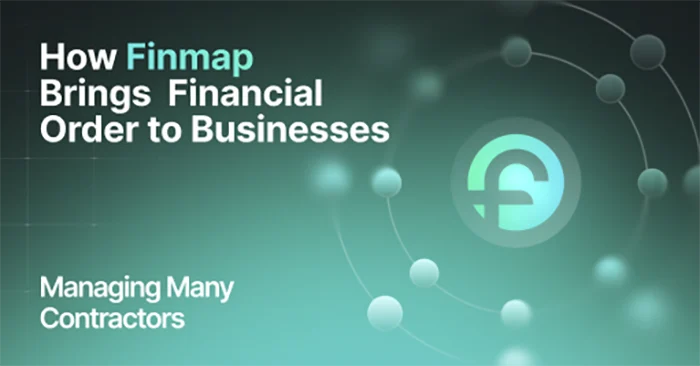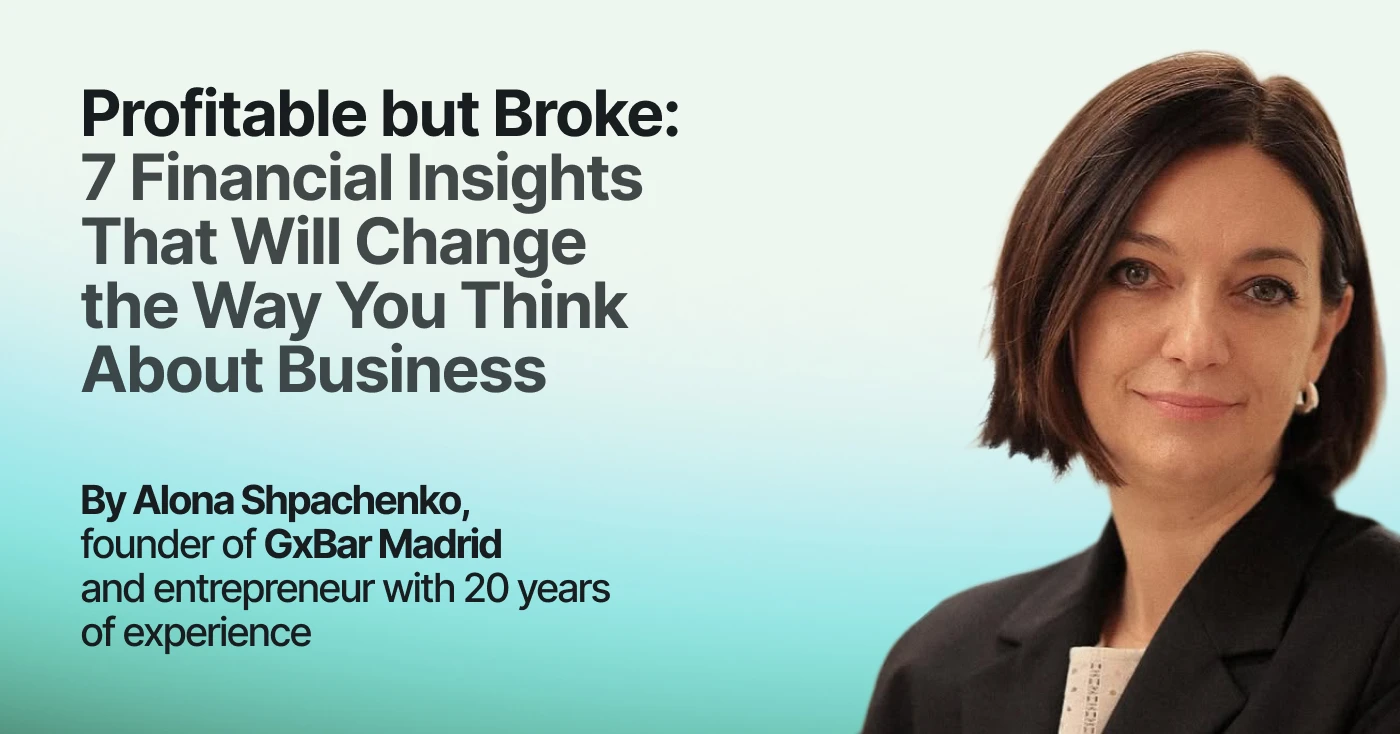How an LED Lighting Importer Turned Financial Chaos into a System with Finmap
At a certain stage of growth, a successful business faces a critical choice: to remain at the level of intuitive management or to move to a systematic approach.
This is especially true for finances, where every mistake can be costly. A company that has been in the LED lighting and illumination business for 16 years found itself at just such a turning point. They needed to do more than just keep accounts; they needed to see the full financial picture, learn to model the future, and prepare for European standards.
We decided to build a financial model — the pillars of financial reporting: P&L, Cash Flow, Balance Sheet — to see the whole picture of our ecosystem. — Alexander Kravchuk, Chief Financial Officer of an LED lighting import company
What You Will Learn From This Article
In this case study, we will examine how a company in the LED lighting market began its transformation from entrepreneurial chaos to systematic financial management:
- What problems the business faced before making this decision;
- how they found Finmap experts and why they chose the financial model;
- what insights they gained during the implementation phase;
- how the vision of the business changes when a transparent financial system appears;
- what advice the company gives to other entrepreneurs who are hesitant about implementing financial tools.
About the Client's Company
The company is an importer of LED lighting and backlighting with a 16-year history; it operates at the intersection of B2B/B2C and sees lighting as an emotional tool for space, not just a technical product.
The business is entering a phase where scale requires a system: instead of "heroism" — regulations, instead of assumptions — numbers, instead of "no one's" tasks — specific responsibilities.
During this time, the company has grown from a small entrepreneurial project into a powerful business with its own ecosystem of areas of focus. However, with growth came the typical challenges of a mature company: it is difficult to see the full picture of finances, decisions are often made "on intuition," and new areas of focus require clear calculations.
There are now many of us, and we are currently in a phase of transformation. Based on the Adizes model, we are somewhere between an entrepreneurial company and a systemic one. — Oleksandr Kravchuk, Chief Financial Officer
It was at this point that the team realized that further development required a financial system that provided transparency and manageability. The goal was not just to "count profits," but to see the full financial picture of the company: where the funds come from, where they go, which areas are really profitable, and how to plan the next steps.
We urgently need to track financial flows. We are transitioning to European legislation. We need to understand our capitalization and our value so that we can be evaluated. — Oleksandr Kravchuk, Chief Financial Officer
Why Is This Necessary for Business
- To create a systematic financial model with clear pillars: P&L, Cash Flow, and Balance Sheet.
- To prepare for the transition to European accounting standards, which require transparency and regularity.
- Calculate new business directions in advance through unit economics and scenario modeling.
- To identify the person responsible for finance — the "pillar" of the process that maintains financial discipline.
The company did not simply decide to "create a financial model," but laid the foundation for systematic management. For growing businesses, this is always a turning point: it is here that the ability to not only earn money, but also to understand one's own value, capitalization, and potential for scaling is formed.
Difficulties and a Turning Point
The company grew to a point where its scale began to require a system. Intuition and "manual math" no longer yielded results — rules of the game, accountability, and reliable figures were needed to make decisions.
What Hurt in Practice
- Finances without a complete picture. P&L, cash flow, and balance sheet reports are not consolidated into a single model → it is difficult to see the company's "ecosystem."
- Risky scaling. We wanted to open new areas, but without unit economics and scenario modeling, this threatened mistakes and losses.
- Regulatory pressure. The transition to European legislation required transparency, regularity, and standardization of data.
- Blurred responsibility. Without an "owner" of the process, finances stalled — decisions were made slowly, and data was collected unevenly.
We want to move forward and explore new areas. And in order to avoid making certain mistakes, we decided that it was time for a business model. — Oleksandr Kravchuk, Chief Financial Officer
How the Decision Was Made
The need to implement a financial model had been on the radar for a long time, but the conscious transition began in the fall. Then there were about nine months of action: internal discussions, understanding the risks, and searching for an approach.
We wanted to implement a financial model quite a long time ago. It happened last fall, and we worked toward it for nine whole months. — Oleksandr Kravchuk, Chief Financial Officer
Events that triggered systemic changes:
- Expertise of the Finmap financier. The team saw a practical approach to financial management in a sprint.
- "Pillar of responsibility." We brought in a CFO so that one person could track the model and data on a daily basis.
- The decision to build a financial model. Launching work on P&L, Cash Flow, and Balance Sheet as a basis for forecasts and scenarios.
We entered the sprint and saw the Finmap financier. Then we already had a CFO. And with the emergence of the pillar of responsibility, we decided that we could apply the financial model. — Alexander Kravchuk, Chief Financial Officer
This turning point is not about "pretty tables" but about decision-making: when each next step is confirmed by a model, not by the hope that "somehow it will work out."
Searching for a Solution and Collaborating With Finmap
When the team finally realized that it was risky to move forward without a systematic financial model, they began to look for a solution. The task was clear: not just to get a table or a tool, but to build a financial foundation for the business — a model that would show what was happening inside the company, provide forecasts, and help make informed decisions.
How They Found an Expert
The decisive moment came when the team participated in a finance management sprint, where Alexander became acquainted with Kateryna Suprun's expertise. It was then that they realized they needed not just consulting, but the deep involvement of a specialist who would build a model based on the company's real processes.
Finmap offered a format that met the key needs:
- development of a financial model with three main reports — P&L, Cash Flow, Balance Sheet;
- systematic data logic — when all indicators are combined into a single ecosystem;
- involvement of a CFO as a "pillar of responsibility" who keeps processes running on a daily basis.
How the Collaboration Went
The work was done entirely online, with clear security rules, deadlines, and scheduled meetings. This became a separate insight for the team — the quality of service does not depend on the format.
At the first meeting, we discussed security and who owned the resources, and we agreed. Subsequent meetings were held without delays. The service was top-notch. The quality online was the same as offline. — Alexander Kravchuk, Chief Financial Officer
In fact, the company has built a new financial cycle:
- regular financial meetings with updates on key indicators;
- standardized data collection processes;
- a single reporting format where all departments work with the same figures.
The ultimate goal of this collaboration is not just to create a model, but to make finance a manageable element of growth rather than a pain point.
Changes That Have Taken Place During the Collaboration
Although the project is still in progress, the company has already achieved tangible results in the organization of finances, data transparency, and the quality of management decisions.
The financier highlighted the aspects we need to pay attention to. He allowed us to look at the financial history from different angles. We came to understand how to collect unit economics. — Alexander Kravchuk, Chief Financial Officer
1) Visibility of weaknesses → priority actions
- Was: intuitive suspicions about "where it hurts."
- Now: a specific list of risk areas with priorities for elimination (what we are doing now/in the next sprint).
2) Unified logic of data and reports
- Was: fragments in different tables.
- Now: a model framework with three pillars (P&L, Cash Flow, Balance Sheet) and agreed rules for collection/reconciliation.
3) Understanding unit economics
- Was: overall margin without details.
- Now: a clear approach to "how to collect" units, which drivers to count, how to make decisions at the SKU/channel level.
4) "Pillar of responsibility"
- Was: blurred role, financial tasks "hanging in the air."
- Now: the CFO tracks data and models on a daily basis.
5) Quality of service and process (online)
- Was: doubts about the remote format.
- Now: agreed security, clear meetings without delays; quality is not inferior to offline.
In my opinion, 10 out of 10! Finmap service is top notch. — Oleksandr Kravchuk, Chief Financial Officer
Transformation of the Financial System
Advice for Entrepreneurs
This is a concise set of practices that stem from the team's experience and can be applied to your business right now.
1. Assign a "responsibility pillar" before you start
Without an internal owner (CFO/controller), the financial model becomes nothing more than a pretty file. The owner is responsible for collection, reconciliation, updating, and regularity.
2. Start with a minimum scope v0
- Three reports: P&L, Cash Flow, Balance Sheet (12-month history).
- 10–15 drivers (price, conversion, average check, cost, payment terms, exchange rate, etc.) with designated responsible parties.
- 3 scenarios: base/growth/stress.
- Weekly financial rhythm: brief review of actual vs. planned and adjustment of assumptions.
3. Formalize data and security rules
At the first meeting, record: who owns the artifacts, where the model is located who has access, how backups are made, and what SLAs are in place for updates.
4. Measure usefulness, not the "beauty" of reports
Key metrics of system maturity:
- response time to "what if?" (hours → minutes);
- model update frequency (times/week minimum);
- accuracy of forecasts vs. actuals;
- percentage of decisions made based on the model.
5. Don't scale chaos — count units before growth
Launch a new direction/SKU only after calculating the margin, sensitivity to price/exchange rate/payment terms, and testing in three scenarios.
6. Use "feedback outside the technical specifications"
Ask an expert about weak areas, even if they are not included in the basic list of tasks — this is often where the main value lies.
7. Online = offline in terms of quality — if there is a process
Set a schedule for meetings, deadlines, and responsibilities. Discipline makes remote collaboration no less effective.
These steps do not require ideal conditions — just management decisions and discipline. This is where controlled growth begins.
Frequently Asked Questions
1. How long does it take to implement a financial model in an average business?
It depends on the size of the company and the quality of the data. In this case, it took about three months from the start of the sprint to the first working version of the model (P&L, Cash Flow, Balance Sheet). If the data is chaotic, it can take up to six months to prepare.
2. Who should be responsible for the financial model?
The key is the "pillar of responsibility." In this case, it was the CFO, who tracks data daily, checks reports, and is responsible for regular updates. Without such a role, the model does not "live" — it turns into a useless file.
3. Can a financial model be implemented remotely?
Yes. The online collaboration format works just as effectively as offline if security rules, deadlines, and communication format are defined from day one. In the case study, the company worked completely remotely — without delays and with high-quality processes.
4. What are the first results that can be seen after launching the model?
Even at the creation stage, the model provided insights into the weaknesses of the business, allowed us to review financial flows from different angles, and begin to form a unit economy. This is not just "reporting," but a new level of business vision.
5. Where should an entrepreneur who wants to systematize their finances start?
Step by step:
- Appoint a person in charge (CFO/controller).
- Determine the minimum set of financial reports—P&L, Cash Flow, Balance Sheet.
- Collect key drivers (10–15 indicators that affect profit).
- Start with a baseline scenario, then add "optimistic" and "stress" scenarios.
- Set the frequency of financial meetings (weekly or biweekly).
A financial model is the owner's "coordinate system": it shows where the business is going and at what cost.




.webp)

